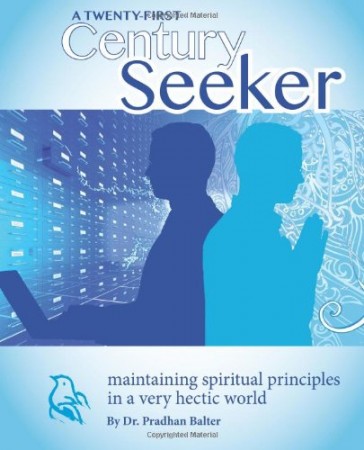 It has been said, and rightly, that we cannot experience meditation by reading about meditation. The only way we can experience meditation is by meditating.
It has been said, and rightly, that we cannot experience meditation by reading about meditation. The only way we can experience meditation is by meditating.
“Wonderful,” you might reply, “but I don’t know how to meditate! What can I do?”
Cheer up, my friend. Dr. Pradhan Balter has written a first-rate book that will guide you in learning how to meditate, so that pretty soon, with practice, you will be able to do it yourself. The author has been a student of spiritual Teacher Sri Chinmoy for over forty years, but, as he says, it is not a book about “Chinmoy-ism;” also, the author has taught classes on meditation for over thirty-five years, so he is able to introduce intriguing questions and insights offered by his students over the years.
The book begins with a very sensible discussion of reasons for wanting to meditate, going all the way from the popular “stress reduction” to the wish for deep spiritual growth, giving practical examples of the ideas that are mentioned as well as valuable, easily-practiced concentration techniques. Dr. Balter then proceeds to the “ABCs of meditation,” where he adds an item that he himself has developed, “inner diligence,” to the usual recommendations about posture, breath and quieting the mind.
A chapter entitled, “Just What Did Those Teachers Say,” addresses the real likelihood that we human beings were not born primarily to live in the body, but rather to experience our souls. (I have put this concept in a rather pedantic manner, but Pradhan Balter is much more down-to-earth, as well as much more revealing, in his presentation.) This discussion is followed by a very sound presentation of the lofty concept, “consciousness.” Here several different metaphors are explored, to help us understand what the idea is really about and why it’s worthwhile for us to try to understand it better.
Following this is a chapter on the five “sheaths” of the human being: the body, the vital, the mind, the heart and the soul. The presentation is quite illuminating, for example, by helping us to understand the common experience of: “I feel like….but I know I shouldn’t.” Besides, unlike Freud’s classification of the human being into the id, the ego and the super-ego, this one helps us to get on good terms with the higher parts of our nature. Later chapters deal with other advanced subjects, like how we can expand our meditative consciousness so that it is expressed throughout our daily activities and “spiritual transformation.”
Each chapter introduces at least one meditation approach, so that, as they go along, readers will have the opportunity to sample quite a few different approaches and find out which ones work best for themselves. Another feature of every chapter is aphorisms on the subject at hand; these are often both wise and compelling.
The book is written in a very informal style which is extremely enjoyable; it also belies the depths of many of its teachings. When the author asks a question, he sometimes inserts a blank page, so that readers will have to think about the answer before they continue to read. He also gives just enough of his own life-story to help us to feel connected to him and to understand where he may be coming from in some of his examples.
As I guess you’ve probably figured out by now, I think this is a wonderful book! It is 216 paperback pages long, and is available on Amazon for USD 16.

